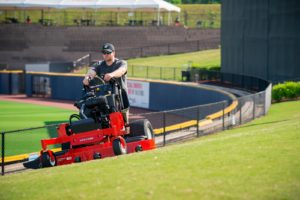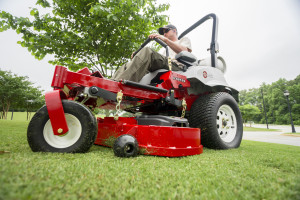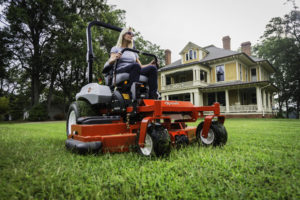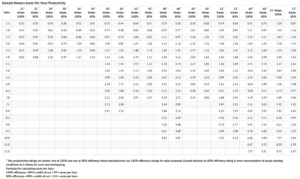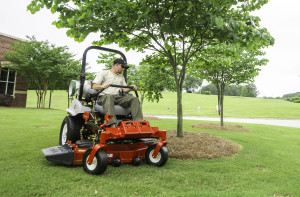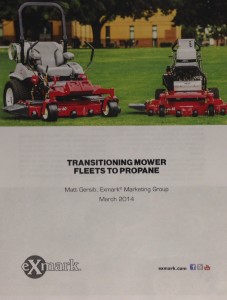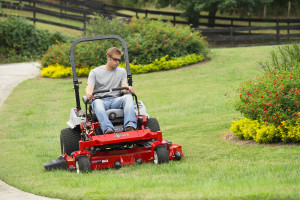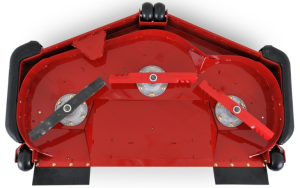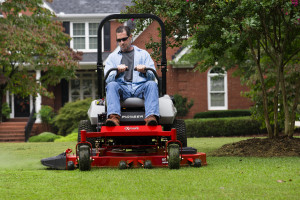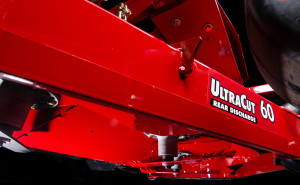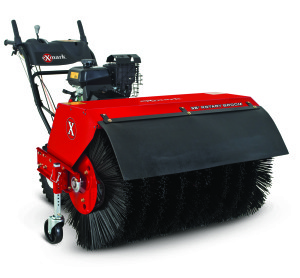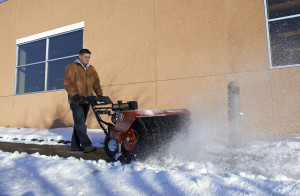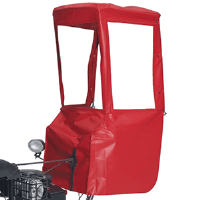As a lawn care professional, you are likely looking for ways to increase the number of lawns you are able to mow, with an eye towards greater profitability. Investing in larger, more powerful equipment is one way to increase the amount you can mow, but how large can you go? Would a wide-area mower be right for your business?
They cut more at every pass and are designed to mow efficiently at higher speeds. Propane or diesel engines can increase fuel efficiency, reducing operating costs. Sounds great, right? But before you invest in one, think about what you mow.
What are Wide Area Mowers?
Wide Area Mowers are walk behind or riding lawn mowers that have decks that are larger 48”. Generally, wide-area mowers work best on flat, open ground. If you have a lot of large commercial properties and level, park-like terrain, a wide-area walk behind can be the right solution. But on rolling terrain or uneven ground, a smaller sized walk behind mower might be better, as too wide of a mower can scalp areas of the lawn, and it will be more difficult to mow around trees, flower beds and other obstacles.
What Size Deck is Best for Large and Small Properties?
If you don’t mow a significant number of large properties, a wide-area mower may not be worth the investment. On lots larger than a football field (1.63 acres), deck sizes of 48” and up may be a good fit. If the bulk of your business is residential lots smaller than an acre and a half, you may be better served by a smaller mower with deck sizes in the 36”to 42” range with more powerful engines and slightly faster speeds.
Is a Wide-Area Walk Behind the Right Choice?
You might think a zero-turn mower with a larger deck is always the right choice. But advances in Exmark walk behinds, like hydrostatic drives, more efficient engines, Enhanced Control Systems (ECS), and improved ergonomics that reduce operator fatigue make a wide-area walk behind like the Turf Tracer X-Series worth test driving. A sulky can transform it to a stand-on mower for those extra large properties. And a wide deck on a walk behind may handle hilly terrain with less scalping than a ride-on with a similar size deck. Walk behind mowers are also recommended for any hilly terrain or near or around potential hazards.
Transportation
Another issue to consider is whether a larger mower will fit on your existing trailers; if not, you’ll need to factor an additional trailer into your cost-benefit analysis. A full-width ramp trailer is required for trailering any product.
New for 2018
If, after running the numbers, you find that your business could support the additional expense of a wide-area mower, and you have the terrain that would make a wide-area zero-turn mower feasible, Exmark is releasing a new diesel Lazer Z with a 96” flex wing deck. Find your local dealer to get a preview.

